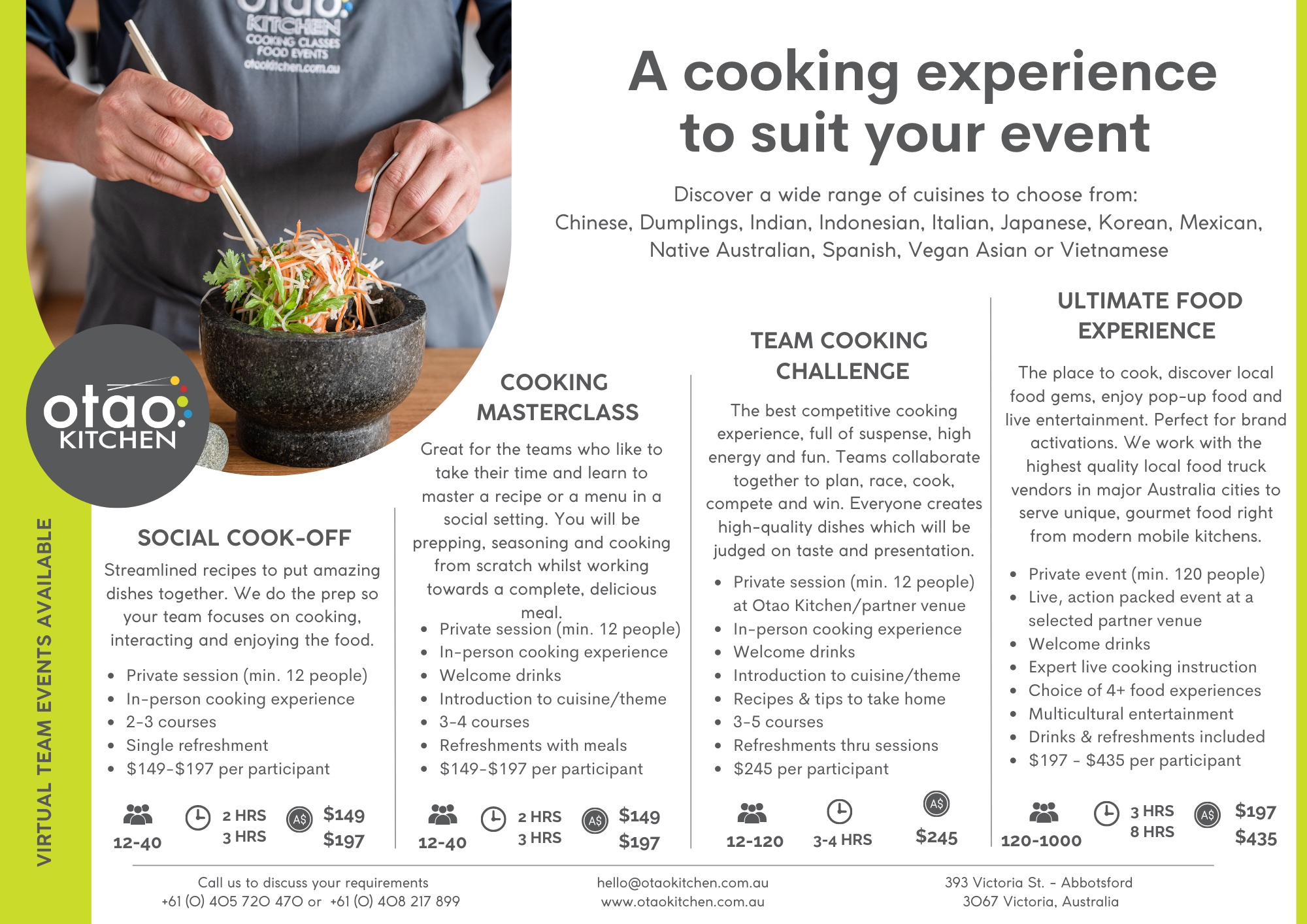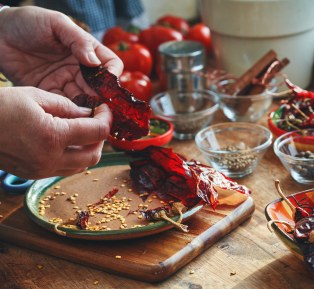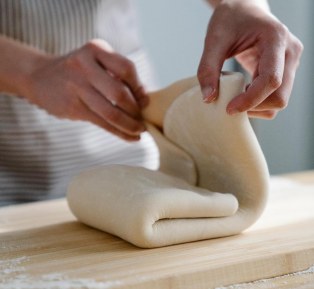
Culinary Inspiration by Otao Kitchen
Cook . Connect. Celebrate
At Otao Kitchen, we believe cooking is one of the most powerful ways to connect—with yourself, your loved ones, and the world around you. It can put a smile on your face, bring family and friends together, and create memories that last a lifetime.
But cooking is more than just connection—what you choose to cook and eat impacts your health and the health of the planet. That’s why we’re passionate about making it as easy and enjoyable as possible for everyone to experience the joy of good, home-cooked food.
“Cook to Connect” is at the core of everything we do. Through our blog, food experiences, and global travel inspiration, we explore the deep relationships between cuisine, culture, and community. From vibrant street food across the globe to time-honoured family recipes passed through generations, we share with you the stories, flavours, and traditions that shape the way the world eats.
Here, you’ll find:
Practical cooking tips and techniques
Authentic global recipes
Cultural and culinary insights
Event planning advice
Kid-friendly cooking inspiration
Travel stories and destination food guides
Seasonal celebrations and global food festivals
Whether you're in your home kitchen or exploring a faraway land, we’re here to help you cook with purpose—and connect with the world through food.
20 Best Vouchers Ideas for Couple
Are you looking for the perfect gift for a special couple in your life? Vouchers can be an excellent choice, offering flexibility and the promise of a memorable experience.
Best Sushi Making Class in Melbourne - How to Choose
We hope you enjoy our blog post about the Best Sushi Making Class in Melbourne. Recently, more and more people are interested in learning how to cook. With so many options out there, it can be hard to choose the right class for you.
Why Otao Kitchen is Perfect for Corporate Events in Melbourne
Planning a corporate event in Melbourne and looking for a venue that offers something truly unique? Look no further than Otao Kitchen. With our 100% hands-on cooking experiences, state-of-the-art facilities, and comprehensive food and activity packages, we provide the ideal backdrop for any corporate gathering.
Key Benefits of Hosting a Corporate Event at Otao Kitchen
1. 100% Hands-On Cooking Experiences
Engage your team like never before with our fully interactive cooking sessions. At Otao Kitchen, everyone gets involved, from slicing and dicing to sautéing and plating. It's a fantastic way to break the ice and get everyone working together towards a delicious end goal.
2. Best in Class Cooking Facility
Our kitchen is equipped with the latest amenities and best-in-class equipment, ensuring a seamless cooking experience. Whether your team is full of culinary novices or experienced cooks, they'll appreciate the top-notch facilities we offer.
3. Great Food and Cooking Activity Package
Combine mouth-watering food with fun and educational activities for an experience that's both enjoyable and enriching. Our packages are designed to provide a perfect balance of learning and leisure, making your corporate event a memorable one.
4. A Place to Meet, Cook, Celebrate, and Connect
Foster team spirit and camaraderie in a vibrant and welcoming environment. Otao Kitchen is not just a place to cook—it's a place to connect, celebrate, and build stronger relationships among your team members.
Types of Corporate Events We Host
At Otao Kitchen, we cater to a variety of corporate events, each tailored to meet your specific needs:
- Team Building: Boost morale and improve teamwork with our engaging cooking classes.
- Product Launch: Make a statement with a product launch event that includes hands-on cooking sessions.
- Company Anniversary: Celebrate milestones with a unique and interactive cooking experience.
Whether you're planning a team-building session or celebrating a special birthday, if you're seeking top birthday venues in Sydney, we have recommendations to help make your event memorable.
Unique Features and Services
Why Choose Otao Kitchen for Team Building?
Our hands-on cooking experiences are designed to foster collaboration and communication. Your team will work together to prepare a meal, which can help improve problem-solving skills and boost morale.
Our 100% Hands-On Cooking Experiences
From the moment your team steps into our kitchen, they'll be fully engaged in the cooking process. This level of involvement encourages teamwork and makes the event more enjoyable and productive.
State-of-the-Art Cooking Facilities
We pride ourselves on our modern, cutting-edge kitchen facilities. Equipped with the latest culinary technology, our space ensures that your team has everything they need to create a delicious meal.
Comprehensive Food and Activity Packages
Our all-inclusive packages take the hassle out of planning. We provide everything from fresh ingredients to professional chefs, ensuring that your event runs smoothly from start to finish.
Conclusion
Ready to make your next corporate event unforgettable? Otao Kitchen offers the perfect blend of fun, food, and team-building activities. Book your event today and discover why we're the top choice for corporate events in Melbourne.
How Cooking Classes Can Boost Team Morale and Productivity
In the fast-paced world of corporate work, finding effective ways to boost team morale and productivity can be a challenge. One innovative solution that has been gaining popularity is cooking classes. These hands-on, interactive experiences offer a unique blend of engagement, collaboration, and enjoyment, making them an ideal choice for corporate teams looking to strengthen their bonds and enhance their productivity.
Hands-On Cooking Experiences
Engage your team with fully interactive cooking sessions. Unlike traditional team-building activities, cooking classes require full participation from everyone involved. This hands-on approach ensures that each team member is actively engaged, contributing to the task at hand, and working towards a common goal. The result? A more cohesive and motivated team.
Benefits of Interactive Cooking Sessions
- Full Engagement: Everyone is involved, ensuring no one is left out.
- Skill Development: Team members learn new culinary skills that they can use outside of work.
- Problem-Solving: Tackling recipes together helps develop problem-solving skills in a fun and stress-free environment.
Best in Class Cooking Facility
Enjoy a state-of-the-art kitchen equipped with modern amenities. The setting of your team-building activity plays a crucial role in its success. A top-notch cooking facility provides the perfect backdrop for a productive and enjoyable experience. With all the necessary tools and equipment at your disposal, your team can focus on the task at hand without any distractions.
Features of a Great Cooking Facility
- Modern Equipment: High-quality appliances and tools make cooking easier and more enjoyable.
- Spacious Layout: Plenty of room for team members to move around and collaborate.
- Comfortable Environment: A welcoming atmosphere that encourages creativity and camaraderie.
Great Food and Cooking Activity Package
Combine delicious food with fun activities for a memorable experience. A cooking class offers more than just the opportunity to prepare a meal; it also provides a platform for team members to bond over shared tasks and culinary achievements. The sense of accomplishment that comes from creating a delicious dish together can significantly boost team morale and foster a sense of unity.
The Perfect Package
- Varied Menus: Options to cater to different tastes and dietary requirements.
- Fun Challenges: Incorporate friendly competitions to add an extra layer of excitement.
- Shared Meals: Enjoying the fruits of your labor together strengthens team bonds.
A Place to Meet, Cook, Celebrate, and Connect
Foster team spirit and camaraderie in a vibrant and welcoming environment. Cooking classes offer a relaxed and informal setting where team members can interact, share ideas, and build stronger relationships. This sense of connection is essential for creating a positive work environment and enhancing overall productivity.
Building Connections Through Cooking
- Team Spirit: Collaborative cooking activities encourage teamwork and mutual support.
- Celebration: Celebrate successes together, whether it's mastering a difficult recipe or simply enjoying a well-cooked meal.
- Long-Term Benefits: The bonds formed during cooking classes can translate into better communication and collaboration in the workplace.
Conclusion
Investing in cooking classes as a team-building activity can have a profound impact on team morale and productivity. By providing a platform for full engagement, fostering a sense of accomplishment, and creating opportunities for meaningful connections, cooking classes offer a unique and effective way to enhance your corporate team's dynamics.
Ready to boost your team's morale and productivity? Book a cooking class with us today and experience the benefits firsthand!
Top 5 Team Building Activities in Melbourne
Building a strong, cohesive team is crucial for any organisation. Whether you're a corporate group, a startup, or a team leader looking to boost morale and collaboration, Melbourne offers a variety of engaging team building activities that promise to bring your team closer together. Here are the top 5 team building activities in Melbourne that you should consider:
1. Social Cooking Classes
Engage in 100% Hands-On Cooking
Nothing brings people together like food. Social cooking classes in Melbourne provide a unique opportunity for your team to connect over a shared love for cooking. These classes are 100% hands-on, ensuring everyone gets involved. Your team will learn new culinary skills while preparing a delicious meal together.
Benefits:
- Full engagement with interactive cooking sessions.
- Bonding over shared tasks and culinary achievements.
- Enjoying the fruits of your labor with a delicious meal.
2. Team Building Cooking Workshops
Experience the Best in Class Cooking Facilities
Take advantage of Melbourne's top-tier cooking facilities for your team building activities. These workshops offer state-of-the-art kitchens equipped with all the modern amenities your team needs to create culinary masterpieces.
Benefits:
- Access to high-quality cooking equipment and ingredients.
- Professional chefs to guide and inspire your team.
- An immersive experience that combines learning with fun.
3. Team Cooking Challenges
Combine Fun and Competition
Add a competitive edge to your team building with a team cooking challenge. Split into smaller groups and compete to create the best dish. It's a fun way to foster teamwork and innovation as your team works under pressure to impress the judges from Amazing Race and Cooking, Master Chef or Corporate Kindness Cooking.
Benefits:
- Encourages teamwork and healthy competition.
- Enhances problem-solving and time management skills.
- Ends with a tasting session where everyone can enjoy the various dishes prepared.
4. Cooking as Problem-Solving Workshops
Foster Collaboration and Creative Thinking
Problem-solving workshops such as Master Chef or Amazing Race and Cooking are designed to challenge your team's critical thinking and collaboration skills. These workshops often include cooking elements, where teams must work together to solve culinary challenges.
Benefits:
- Develops problem-solving and critical thinking abilities.
- Strengthens communication and leadership skills.
- Provides a fun and engaging way to tackle complex problems together.
5. Culinary Celebrations
A Place to Meet, Cook, Celebrate, and Connect
Host a culinary celebration with one of our Master Classes to cap off your team building activities. These events are perfect for celebrating milestones, holidays, or simply bringing your team together in a festive atmosphere with around the world cooking menus.
Benefits:
- Fosters a sense of community and celebration.
- Allows for a relaxed and informal setting to connect.
- Provides an opportunity to reflect on shared experiences and achievements.

Conclusion
Melbourne offers an array of exciting and innovative team building activities that focus on cooking and problem-solving. From social cooking classes to competitive cooking challenges, these activities are designed to engage your team, enhance collaboration, and create lasting memories.
Ready to bring your team together for an unforgettable experience? Contact us today to book your next team building event in Melbourne and start cooking up success!
Complete Guide to Taking a Pasta Making Class 2024
A pasta making class is your gateway to mastering the craft of pasta, transforming simple ingredients into delicious, homemade dishes that you can take pride in. In this blog post, we’ll explore what makes pasta making classes so special, what you can expect, and why you should sign up for one today.
How to Make Hotpot at Home - Complete Guide 2024
You can't feel lukewarm about hotpot because hotpot doesn't feel lukewarm about you. Hotpot is a communal, interactive, and delightful dining experience that is especially popular in East and Southeast Asia.
Top 15 Online Cooking Courses
Are you looking for a cooking class but have a hectic schedule?
Online cooking courses might be a perfect option cause it can allow you to learn cooking right at home.
Looking for “Asian Cooking Classes Near Me”? - Read here
Are you looking for "Asian Cooking Classes Near Me"? Look no further!
In this article, we'll take you on a journey through various Asian cooking classes, where you can learn to create mouthwatering dishes from scratch, guided by expert chefs. Get ready to discover the secrets of Asian cuisine and bring the joy of cooking to your kitchen!
You may also want to try
Public Cooking Masterclasses
3 hours
$197
Quick & Tasty Cooking Class
1.5 Hours
$109
Fold & Flow - MFWF
2 Hours
$157
The Confident Home Chef – Sauces, Fermentation & Pickling Workshop
1 Day (9-4pm)
$745
The Confident Home Chef – Bakery Specialties Workshop
1 Day (9-4pm)
$745
The Confident Home Chef – Pastry Specialties Workshop
2 Days (9-4pm)
$745
The Confident Home Chef – Vegetable & Plant-Based Cooking Workshop
1 Day (9-4pm)
$745
The Confident Home Chef – Seafood Mastery Workshop
24 Hours
$745














